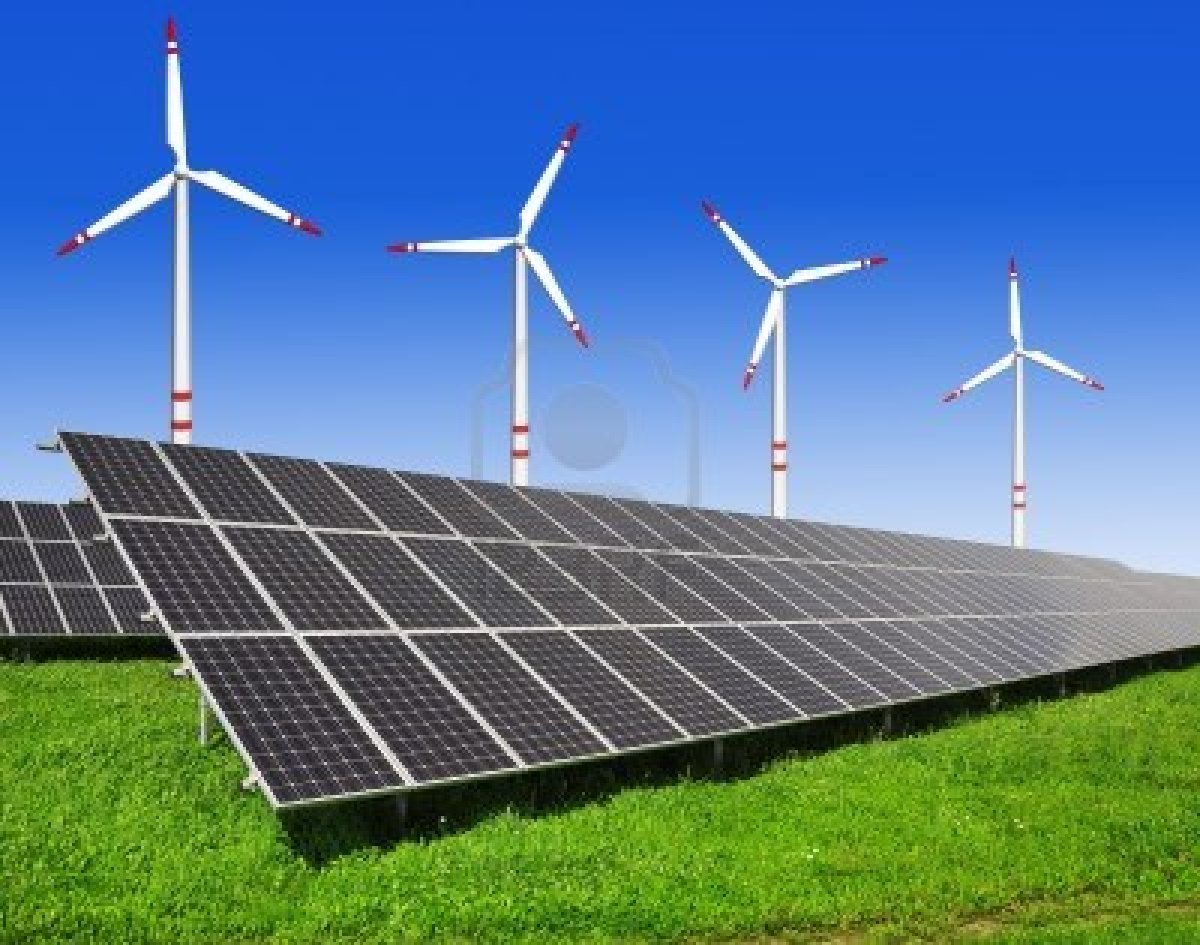
India′s Burgeoning Solar and Wind Energy Markets Jumpstarting Job Growth
India’s solar and wind programs have catalyzed rapid growth, providing much needed energy access while creating enormous employment opportunities for India’s workforce, as discussed during the launch of a new series of reports on Renewable Energy Jobs and Finance in New Delhi today. The report series, authored by NRDC and the Council on Energy, Environment and Water, is the first independent, external analysis of the employment opportunities for India solar energy and wind energy markets. The analysis also finds that the Indian government and business leaders must overcome financing obstacles to reach renewable energy goals and full job growth potential of the clean energy sector.
IMG_6450.jpg
Construction workers building a solar power plant in Rajasthan. (Photo Bhaskar Deol)
In just four years, India’s solar market has grown more than a hundred fold to achieve over 2.5 gigawatts (GW) of grid-connected installed solar energy (about the same as California), largely driven by national and state policies. India is also the world’s 5th largest wind energy producer, with 20 GW of installed wind capacity, also supported by national and state policies.
Though a dearth of data exits on jobs created by renewable energy in India, the preliminary data show huge job growth potential with an estimated 70,000 jobs already created. But unlike international markets, Indian companies do not regularly report job numbers.
The reports were launched by former Minister Suresh Prabhu and Chair of the Advisory Group for Integrated Development of Power, Coal, and Renewable Energy. During the discussion on the reports, Mr. Prabhu emphasized the importance of clean energy.
Energy access and clean energy development is a national priority. Solar and wind energy provides a tremendous opportunity to provide light to Indian homes and jobs to local communities.
To examine employment opportunities, NRDC and CEEW conducted research, surveys, and analysis and found unequivocally that renewable energy creates local jobs in India that drive economic development and provide clean energy. Based on the preliminary research and hampered by severe data availability, the analysis shows that grid-connected solar energy development employed over 23,000 workers during the first phase solar policies in India 2011 to 2014. Similarly, wind energy development created over 45,000 jobs by 2012 based on government estimates, as discussed in “Solar Power Jobs: Exploring the Employment Potential in India’s Grid-Connected Solar Market” and “Creating Green Jobs: Employment Generation from Wind Energy in India.”
The reports from NRDC and CEEW provide findings and recommendations to aid the Indian government and private stakeholders to achieve the National Solar Mission target of 20 GW of installed grid-connected solar energy by 2022, equivalent in energy capacity to 40 mid-sized coal-fired power plants, and India’s newly estimated wind energy potential of 100 GW, which is about half of the country’s 220 installed energy total. Clean energy development is also vital to economic growth in India. While the National Solar Mission and the forthcoming Wind Mission still face significant long-term financial commitment hurdles, India has already made important strides to attract new domestic and international players into the market and generate local jobs.
Financing clean energy remains a chief barrier in scaling renewable energy in India as discussed in the new joint reports “Reenergizing India’s Solar Energy Market Through Financing” and “A Second Wind for India’s Energy Market: Financing Mechanisms to Support India’s National Wind Mission”.
The key findings and recommendations include:
Boost Financing: To bolster confidence among financiers and overcome high interest rates in India, the Indian government should develop innovative financing solutions, such as green banks, green bonds, and infrastructure debt funds for renewable energy. In addition to government must diligently enforce Renewables Purchase Obligations and support further development of the Renewable Energy Certificate (REC) market.
Report Job Data: Companies should provide their project’s job creation numbers, like their international counterparts. Given the importance of employment in the Indian market, increasing the transparency on the number of jobs created in the renewable energy sector would strengthen public support and lender confidence in renewables.
Timely Policy Implementation: Policy delays and unpredictable shifts, such as the wind accelerated depreciation polices and long delays in solar policies, have recently slowed solar and wind market growth. Both national and state programs must continue to increase market momentum through timely program implementation, with timelines for guidance, auction, and payments.
To take a deeper look into on-the-ground job opportunities from renewables, we also developed job profiles for solar and wind projects in India, including:
“Creating Green Jobs: Employment Generation by Gamesa-Renew Power’s 85 Megawatt Wind Project in Jath, Maharashtra,” quantifying that the wind project created a total of 438 jobs with nearly fifty percent in the construction and commission and 23 percent in operations and maintenance.
“Creating Green Energy Jobs: Employment Created by Kiran Energy’s 20 Megawatt Solar Plant in Rajasthan,” finding that the solar PV project generated over 180 jobs, primarily for construction workers and highly skilled-professionals during construction and commissioning.
“Making Use of the Roof: Employment Generation from Hero MotoCorp’s 80kw Rooftop Solar Project in Haryana, India,” showing that major companies like Hero MotoCorp, the world’s largest motorcycle company, is investing in solar energy and putting it on their factory roofs to manufacture motorcycles and create jobs.
Solar and wind energy development have the power to provide greater energy access, create jobs, and mitigate climate change to transform India’s economy. While evident to government, industry, and civil society, this potential power still needs to scale. The successful achievement of renewable energy depends on strong government policies and strategic financing. With stronger leadership, India can support and enable a needed resurgence in the diverse renewable energy projects and products that can sustainably power its future and help mitigate climate change’s worst impacts.
By Switchboard Published: Aug 28,2014
X
Please confirm If you want to unregister
X
You have been unregistered from gradlink







